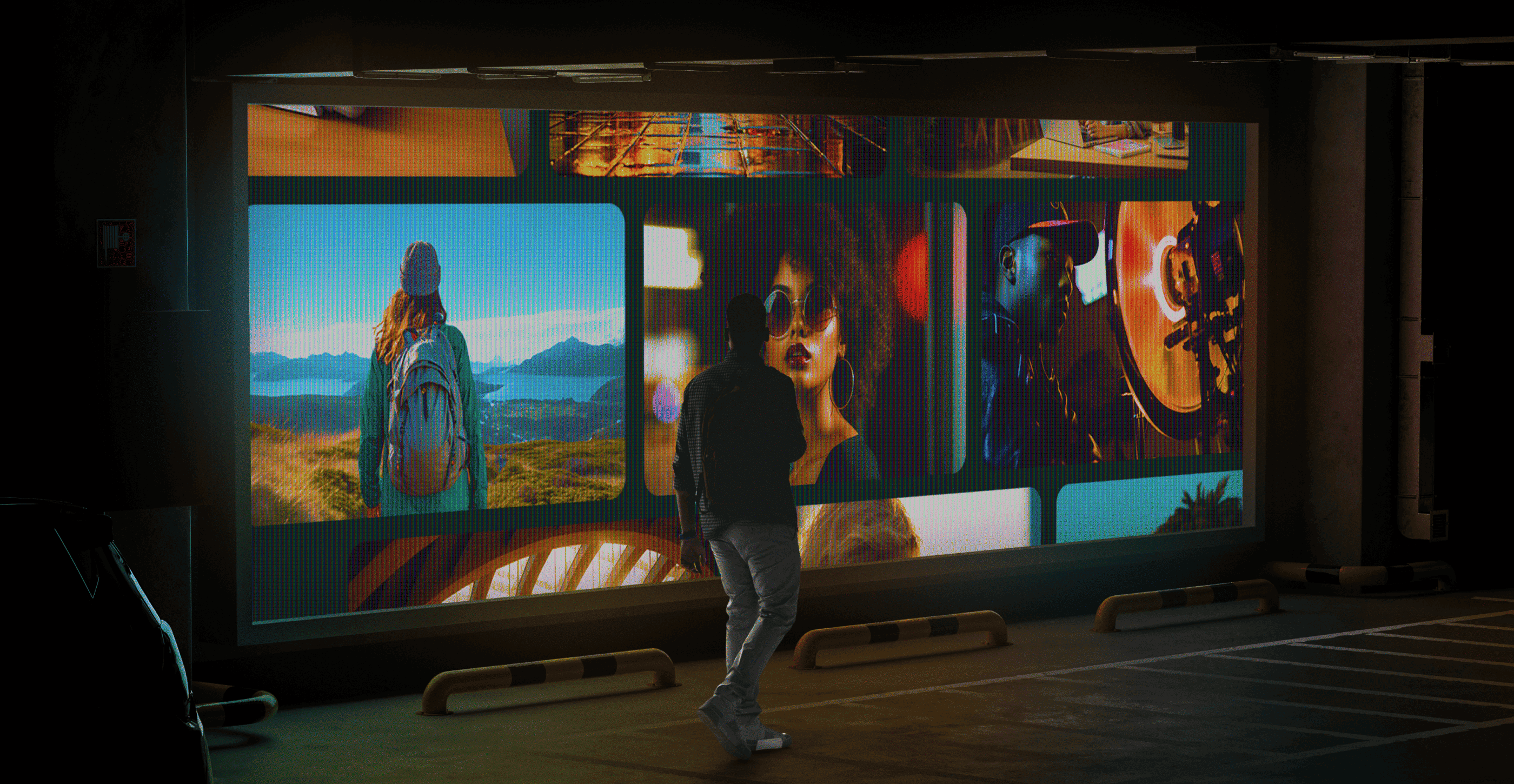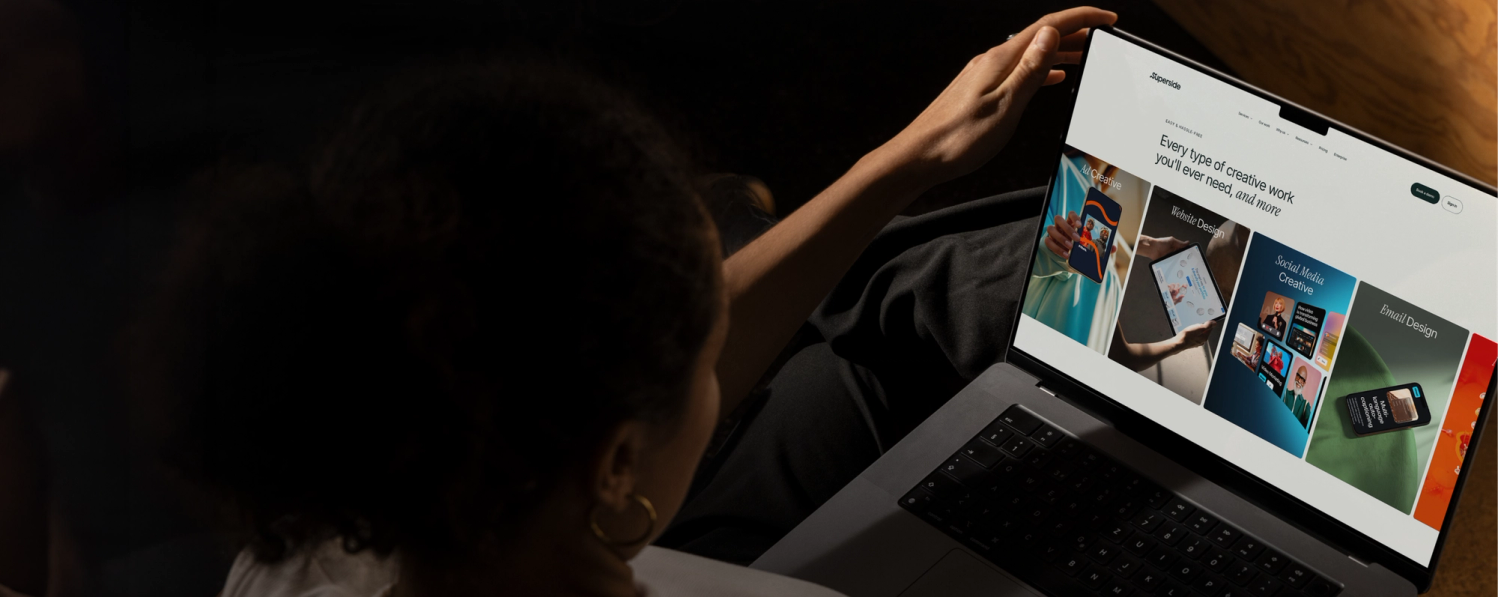How to Remove Creative Bottlenecks From Your Business


Bottlenecks can be one of the most frustrating parts of a creative process.
When your team is growing fast, you have a lot of creative needs, often without the structure set in place to deal with that pace. In this structure, bottlenecks are inevitable. You might end up being snagged on one small element of your much larger campaign, just because of an under-optimized design operations structure.
For example, let’s say your business has grown from a small scaleup to an established, nationwide business. Your leadership team realizes that the rushed brand aesthetic they came up with on a Friday afternoon no longer fits your business model. They’ve tasked you with developing a brand revamp, making sure your business looks and feels the part. Now, you reach out to the creative team, and they ask you for the style guide—what style guide? In an Arc of the Covenant moment, you realize that the creative team has been building the plane while it’s in the air.
Now, you need to strip everything back and create a creative operations system that will allow your creative team some breathing room that is also scaleable.
How?
In short, design bottlenecks are not a root problem, they’re a symptom of a much larger issue.
We recently spoke with Aysha Khalid, Head of Design EMEIA at Cision. She is an industry leader in developing creative processes that can scale and be sustained in a range of business sizes. She provided us with some exceptional insights into the world of creative operations.
We also spoke with Aysha over in our community - you can still find the recording to catch up on what she has to say on breaking through creative bottlenecks.
Here’s what we’ll cover in this article:
What is a Creative Bottleneck?
Quite simply, a Creative Bottleneck is a point of congestion. It often happens for a number of reasons:
1. Scope:
There is no clear scope on what the creative project is meant to cover, and the goalposts keep moving as the team is working, causing confusion.
2. Accountability:
Without a clear creative process, the ownership of tasks gets lost, leading to certain project goals being left by the wayside.
3. Time:
Not enough time is given to the team to develop the creative assets, leading to rushed work and eventual revisions.
4. Lack of Processes:
Without documented processes, kicking off every project is like starting a new one for the very first time. It often leads to the same problems (and sometimes some new ones).
5. Fractured Pipelines:
Your team is rushing to create a new video graphic for a customer testimonial video, only to realize afterward that a design template had already been created for this exact asset months ago. You’ve wasted hours of creative work that could have been avoided with a clear and documented pipeline.
6. No Retrospective:
A rushed creative team has zero time to look back at a project and think of what could have been done better. Instead, they’re already on to the next problem, most likely working in the same fractured design process.
There are plenty more reasons why creative bottlenecks can appear, but these are certainly the most common. Finding the right way to remove these creative bottlenecks can be a challenge, especially if your team is moving at a million miles per hour, constantly shifting their goals and project needs.
Case Study Spotlight: How Shopify Resolved Creative Bottlenecks With Superside
Shopify has had one of the most visible and successful growth stories in recent years. Going from an online tool for selling snowboards to powering 1.5 million online stores in 175 countries has not been an easy task. Not only did they have the problem of growth, but they also needed to tackle the problem of providing and advertising new services.
Providing all of these ads in multiple languages for multiple platforms was a severe challenge. It was leading to the creative team being bogged down in constant iterations of similar ads instead of being able to take a step back and develop new creative solutions.
The graphic below shows exactly what the Shopify team was facing
To overcome this problem, Shopify implemented a novel solution.
Firstly, they implemented growth teams. These specialized teams’ entire purpose was to find new solutions to established problems, allowing Shopify to grow and expand in a more stable manner. These multi-disciplinary teams would experiment with ads or creative assets, constantly iterating new designs that could be practiced on their audiences.
However, this led to a similar problem to before, instead of spending their time experimenting and strategizing, most of the team’s time was spent creating thousands of iterations of similar graphics.
In short, Shopify had discovered a creative bottleneck in its system. This is when they reached out to Superside.
By using Superside’s Creative-as-a-Service platform, Shopify was able to hand off the repetitive iteration process for their ads to Superside’s designers, giving their team the time to experiment, develop, and scale their growth process.
Here’s a showreel of some of the work Shopify had developed by the Superside team.
How to Solve Creative Bottlenecks
We’ve already mentioned above what can cause these Creative Bottlenecks, but it’s in diving into the fundamentals of Design Operations that you’ll begin to see how you can avoid these roadblocks before they even begin.
If you want to avoid Creative Bottlenecks, you need to understand the flow of your creative process. Below is the typical journey of a creative asset:
Designers and marketers looking at this pipeline will already see exactly where the bottlenecks are going to arise, and we mentioned many of them above, particularly:
- Scope
- Accountability
- Time
- Lack of Processes
- Fractured Pipelines
- No Retrospective
So how do you resolve these creative bottlenecks?
Here’s what you need:
Solution 1: Know Your Purpose
This lies under the issue of scope. If you, your team, or your brand are not fully aligned with what the actual purpose of this creative project is, you’re going to run into issues. The best way of solving this issue is to create a templatized, comprehensive brief system. If every creative brief sent to the design team presents information incorrectly or in a different format, it creates significant communication issues.
Make it a priority that your team has a full understanding of your design process and how to present their needs to the creative teams. It also ensures that your team is not requesting irrelevant or overambitious creative assets.
It is fundamental to your brief process that the purpose of the creative asset is shared with every stakeholder and placed front and center at each stage of the design pipeline.
Or, if it’s an issue that your scope is realistic but your pipeline is overflowing, you can always call in the Creative-as-a-Service experts.
Solution 2: Set Clear Team and Timeline Goals
Working in a team can be both inspiring and challenging. To make sure everyone is on the same page, try setting clear goals for your team and the timeline for when you want to achieve them. This can help increase collaboration and provide a framework for managing the creative process.
If you need more insight into the world of creating clear team goals, you’re in luck—we’ve written a full guide into design leadership with in-depth interviews from industry-leading experts and a clear roadmap for understanding design leadership.
Solution 3: Have Realistic Goals
It's important to set goals that are challenging but also achievable. If your goals are too unrealistic, it can lead to frustration and demotivation. Instead, try setting goals that are within reach and that can provide a sense of accomplishment when you achieve them.
This issue often arises due to a breakdown in communication between the marketing and design team. Both departments often speak different languages with completely different goals, and if one team is under pressure, it can often be moved onto the other.
Need a guide on how to bridge the gap between marketing and design teams? We spoke to businesses like Shopify, Intercom, Picsart and more on how they have created a streamlined communication structure between their marketing and design teams.
Solution 4: Accountability
Finally, it's essential to hold yourself and your team accountable for the goals you set. Regular check-ins and follow-ups can help keep everyone on track and ensure that you're all working towards the same objectives. Plus, it can be motivating to see progress and know that you're all making a difference.
But how do you set up this operations system with true accountability?
You guessed it, we have a guide for that too.
Our DesignOps guide will give you the building blocks to develop a clear creative process that allows you to make the most of your entire team
Learn How to Empower Your DesignOps System
To overcome creative bottlenecks, clarity is key. You need to know what exactly you've set out to do and have clear structures set up in order to achieve it. From there, you can get your creative processes back into the flow you need for success. To iron out any kinks, your design and marketing teams need to all be working together while also knowing the necessity of their own individual contributions within the wider process.
Knowledge is power, and once your whole company is on the same page, working towards a clear outcome, your creative processes will become more harmonious across the board. Equipped with knowledge and vision, each individual involved will be empowered to show up confidently in their role, and you can watch creative bottlenecks fade into your rearview mirror.
David is a Senior Content Marketer at Superside. A former journalist with bylines too numerous to enumerate, he brings his love of storytelling and semantics to the marketing world. Recognizing the sizable gaps in the creative-as-a-service (CaaS) sector, he jumped at the chance to fill the creative void for ambitious brands. In his off hours, he enjoys loud music, making vegan meals and being made fun of for making vegan meals. He’ll gladly talk to you about any of the above on LinkedIn.
You may also like these

7 top creative support solutions for teams and enterprises
There’s no denying that today’s marketing and creative teams are under more stress than ever. To deliver high-performing, top-quality assets at scale, many teams are getting fewer resources, smaller budgets and tighter deadlines.As an ever-increasing number of brands compete for audience attention, the demand for compelling content is getting higher—and essential for creative teams to meet.It’s no surprise then that in-house marketing and creative teams are turning to advanced creative support solutions to help enhance efficiency, streamline workflows and optimize production processes.From AI-powered design to cloud-based collaboration software and outsourced creative services, these solutions transform how teams work, allowing them to produce more assets faster without compromising quality.Our best advice to teams and enterprises on how to get this right? Make Superside your creative team’s creative team and free up your team to do their best work.
How to find creative partner agencies to boost 2025 strategy
Are your internal creatives battling to keep up as the demand for authentic, trustworthy content grows? For many brands, outsourcing creative makes sound financial sense. Plus, partnering with an experienced creative services team can bring fresh ideas and impressive scalability.80% of customers say that the experience a company provides is just as important as its products or services, meaning that driving great customer experiences is essential in 2025. Once again, creative partnerships pay dividends, as many creative agencies go well beyond KPIs to drive genuine cultural impact and build trust.Unlike traditional agencies, creative partner agencies also typically act as an extension of your team. Work with Superside, for example, and our talented designers will become your creative team’s creative team.
6 Social Media Design Trends Defining Engagement in 2025
In 2024, brands used engaging user-generated content (UGC) in their marketing strategies, with TikTok lookalike contests and the AI ‘90s yearbook challenge trend sparking significant social media engagement. Pepsi leaned into nostalgia for its rebrand, while Starface turned functional skincare into a fashion statement.In a content-saturated world, brands must keep up with social media graphic design trends to stand out and remain relevant. As converting followers into customers grows more challenging, creating distinctive, scroll-stopping content can help your brand cut through the noise.Collaborating with a fully managed team of creatives who understand the latest social media design trends is an excellent place to start.And who better to guide us through this year’s key trends than Superside’s Executive Creative Director, Kae Neskovic, and Juan Cistoldi, Creative Strategist.Let's dive in:














